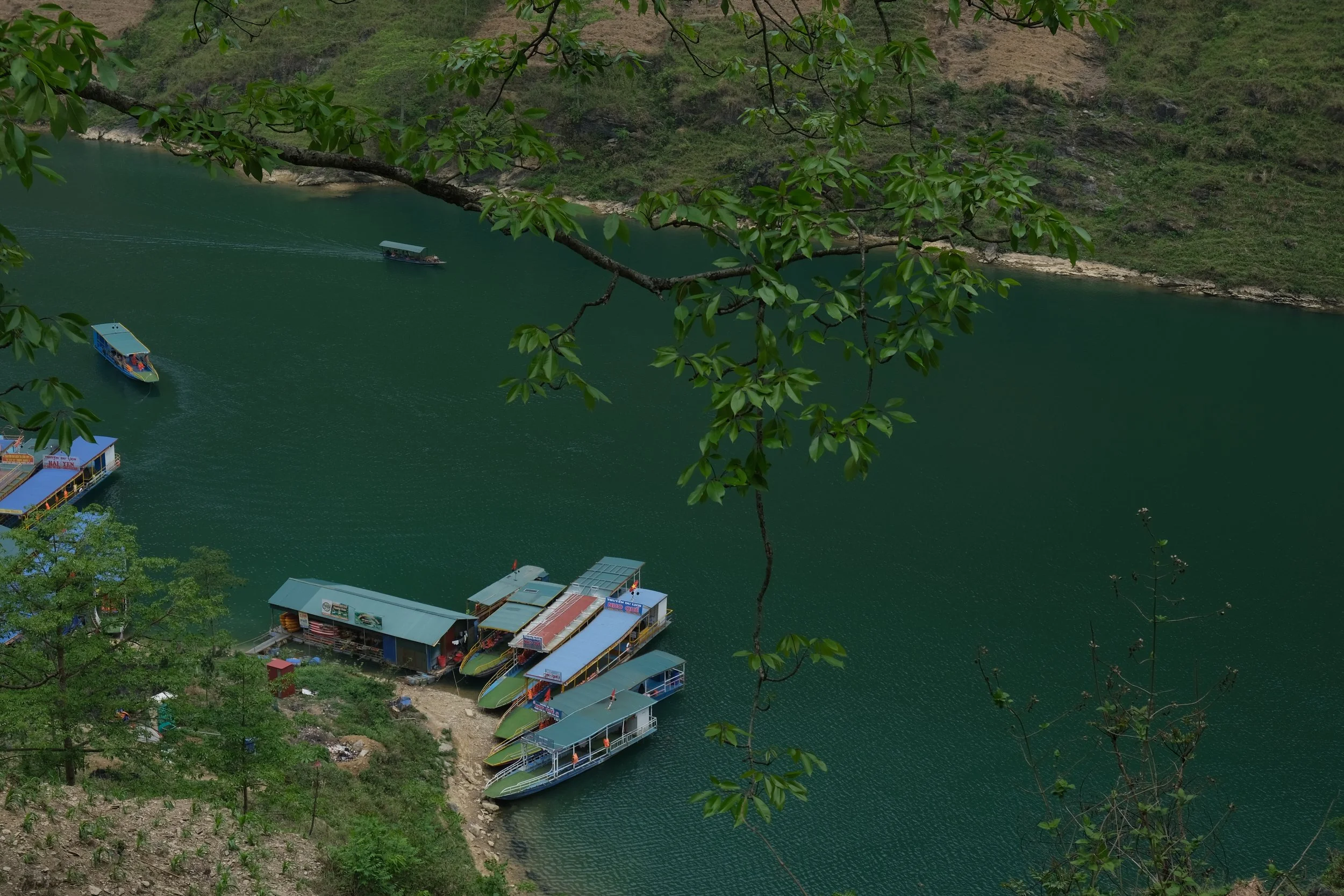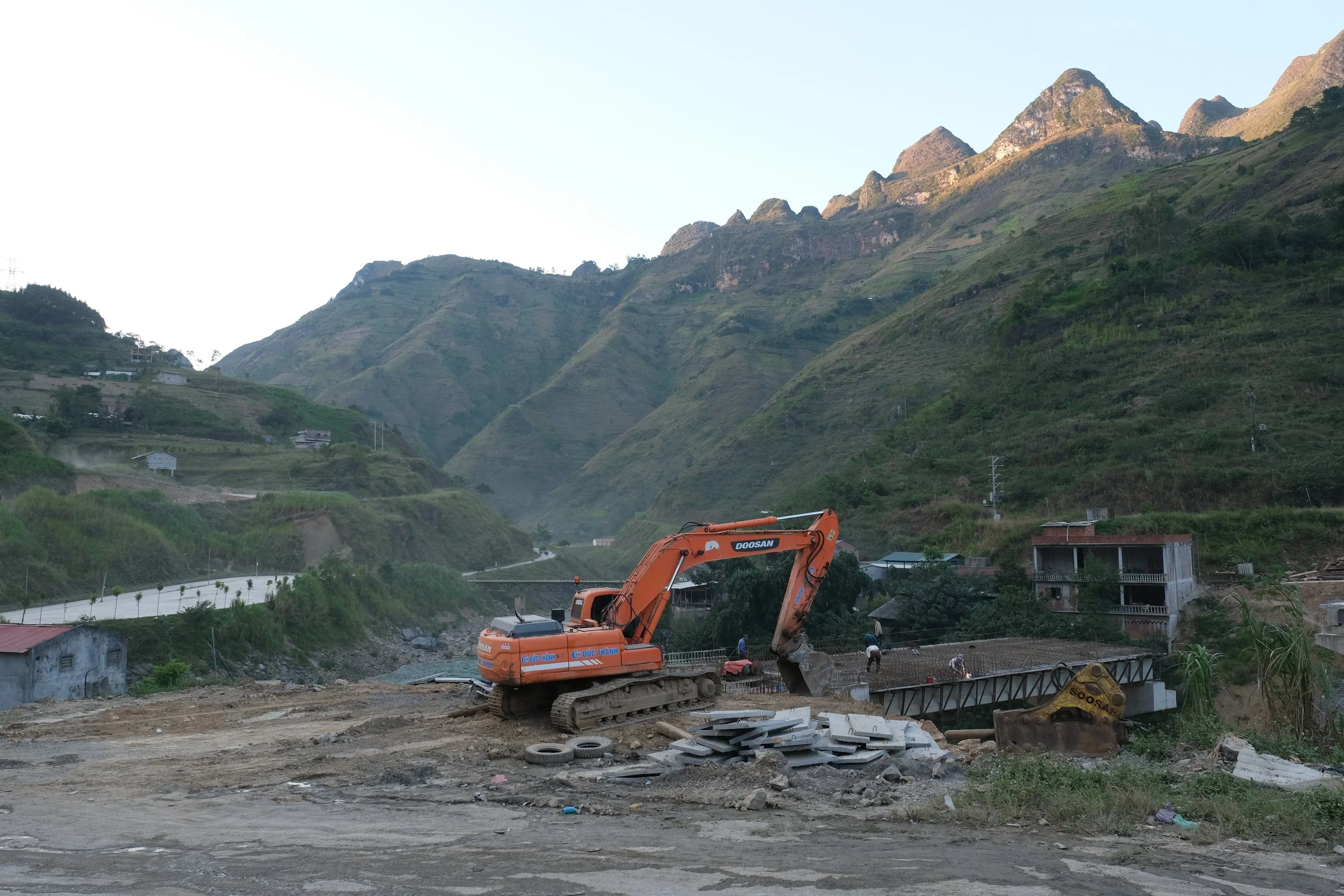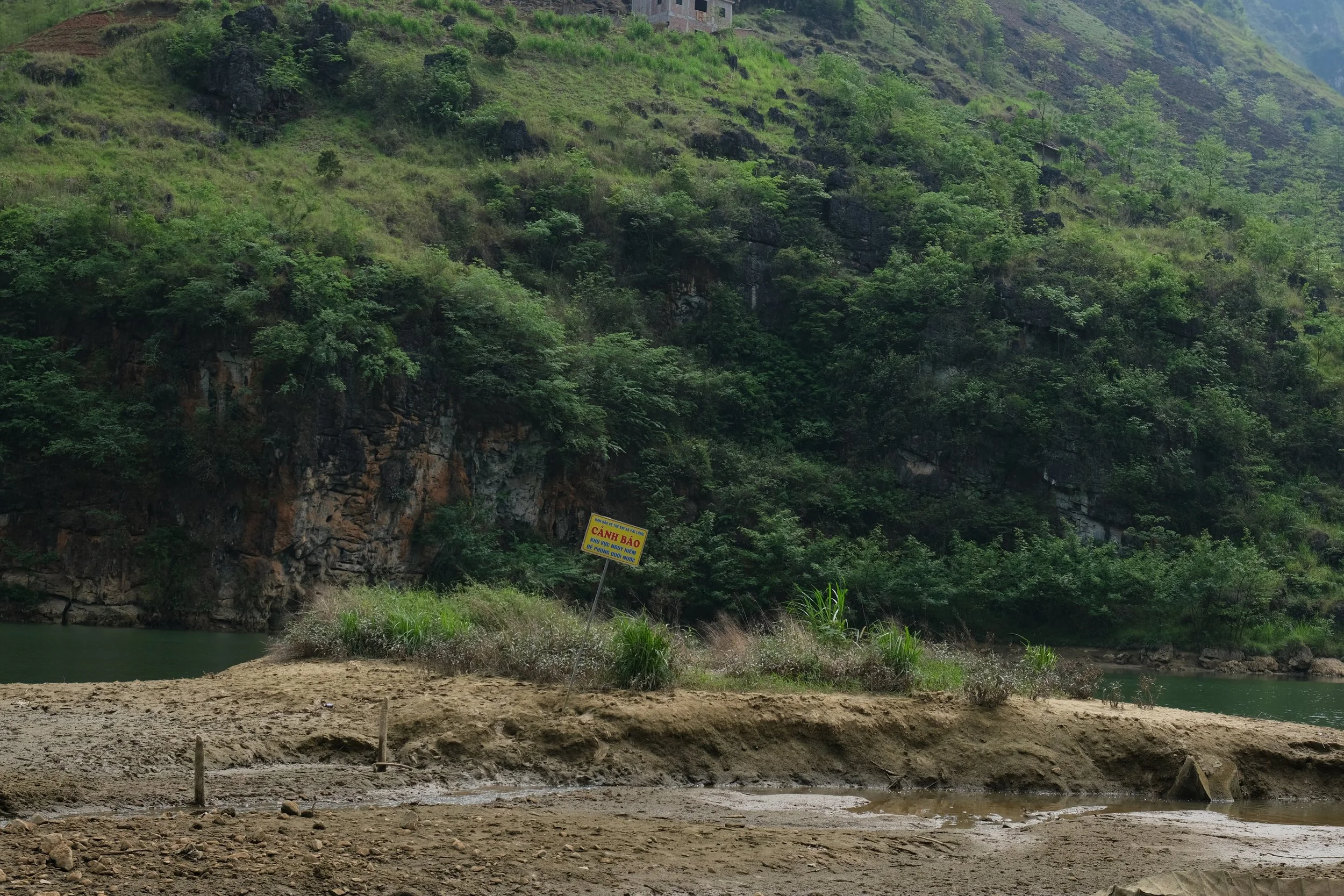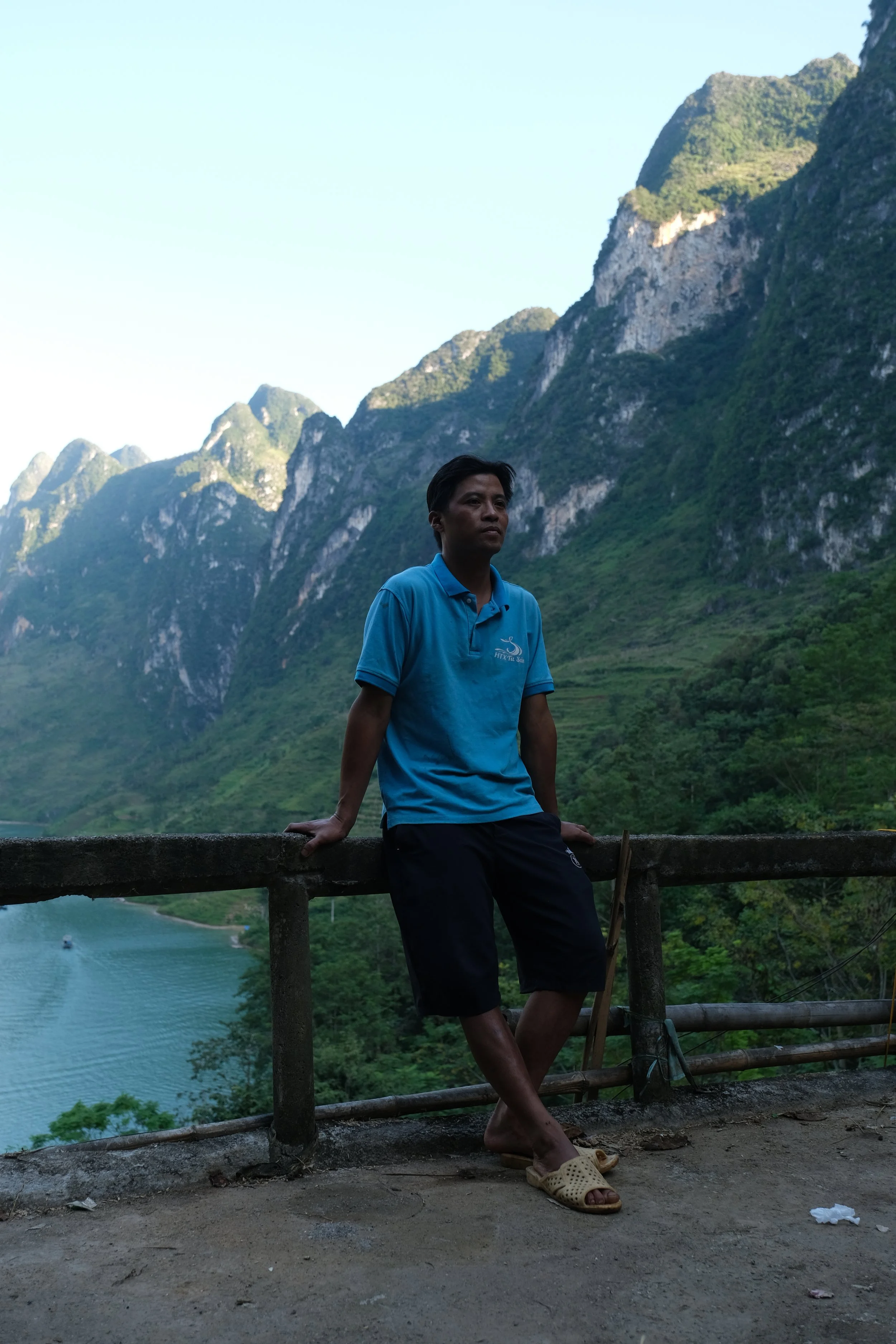Cry me a River
Cry me a River (2021 - 2023) examines how capitalist development and ecological disruption impact the traditional livelihoods of Tà Làng villagers in Hà Giang province. Situated eight kilometers from the 4C National Highway, Tà Làng is home to 39 households from various minority groups who rely on the Nho Quế River for fisheries, irrigation, and agriculture. Their lives are intimately tied to the river, which sustains both economy and culture.
In 2007, the Hà Giang provincial government partnered with Bitexco to construct a dam on the Nho Quế River, bordering Vietnam and China near the base of Mã Pí Lèng pass. The dam reshaped local life: investors took control of ticket sales, forcing boat operators and related businesses to comply with strict dam management, disrupting a centuries-old river-based economy. Disputes over access and services have persisted since its construction, leaving villagers marginalized in their own land.
Tourism in Hà Giang is rapidly expanding, attracting over two million visitors annually. The Nho Quế River has become a major attraction, generating revenue while simultaneously eroding the ecological balance and traditional livelihoods of the communities that depend on it. This dynamic tension between development and cultural preservation reflects broader struggles across Vietnam, where state-led or profit-driven interventions increasingly threaten local ways of life and fragile ecosystems.
Through photography, Cry me a River documents the everyday realities of this transformation: the intimate work of villagers on the river, the encroachment of infrastructural projects, and the human consequences of economic and environmental shifts. The project seeks to preserve memory, highlight resilience, and raise awareness of the ongoing struggle to balance development, ecology, and cultural survival.
The overview of the Nho Quế hydropower project construction I.
The temporary boat stops before the hydro investors interfere to build a new boat stop.
A local guy is rowing the boat to catch fish to support their meals, but fish are only available in a little.
Overview of the area planned to locate the new ticket counter, invested by the hydro investors and donors.
The overview of the Nho Quế hydropower project I construction.
The drowning warning sign is placed when the water is blocked to make a reservoir.
Children are walking on the protection line, which connects the hydropower operations area and the main street to the ticket counter.
View of Nho Quế I hydro power project from the Mã Pí Lèng pass
Children are swimming and playing around the submerged agricultural area.
Portraits of local people whose livelihood is predicated on the Nho Quế River.
Hmong people are harvesting their crop near the dry part of the Nho Quế River.
Read full story in the Licas News and the Polis Project.
















